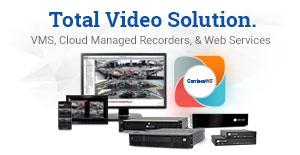An Integrator's Guide to Cloud Video Surveillance

by Derek Rice, SDM Magazine
While providers’ specific offerings may differ, the one constant is the opportunity to cash in on additional RMR from the cloud.
By now, the benefits of cloud-based video should be quite clear. For starters, moving video to the cloud can reduce or even eliminate the hardware required on a customer’s premises. This not only cuts down on the cost of the hardware itself, but also the cost of maintaining and updating that hardware.
Cloud video services also allow end users to choose from a wide variety of camera brands, and scalability is simplified. Adding cameras to a system is as easy as changing a subscription or monthly fee to allow for greater storage, which is much more affordable than investing in on-site hardware, which can become an expensive proposition between the hardware itself and ongoing maintenance. Cyber security is also off the customer’s plate, as the cloud provider takes care of any updates and security patches necessary, as well as securing the data movement itself.
There are a number of companies in the marketplace that provide cloud video services of one type or another. With regard to these services, they tend to encompass hosting, video analytics, artificial intelligence (AI) and much more. The specific services a customer needs will determine which cloud video offerings will be best suited for a particular application. Other determining factors will be storage and retention requirements compared to bandwidth availability — and cost.
Cloud video services traditionally come in two varieties: pure cloud and hybrid solutions. In a pure cloud solution, cameras are connected directly to the cloud for recording, with video analytics performed either on the edge within the camera itself or in the cloud to identify events to generate alerts or file video for later review. A hybrid solution combines on-premises recording hardware mixed with cloud storage, and may be the best solution for customers with limited bandwidth. A typical setup under this model would have all video recorded on-site, with video of interest (certain types of events identified and flagged by video analytics or based on time of day or other factors) moved to the cloud either as recorded or on a schedule.
From a cyber security perspective, cloud video solutions can alleviate the burden of protecting customers’ networks, video and data by providing the secure gateway to the cloud. In a full-cloud solution, the provider also assumes the onus of updating software and applying patches to ensure continued cyber security.
One thing nearly every cloud video service has in common is the availability of a mobile app that allows end users to view their video from anywhere at any time. Additionally, some of these apps make camera installation easier with auto-detection and configuration capabilities, while others offer the ability to update cameras to the latest firmware version from within the app.
Given the vital role recurring monthly revenue (RMR) plays for security professionals, the main attraction of cloud video is the ability to generate additional RMR by charging for a variety of services, such as hosted storage, business intelligence, automation, video analytics and much more.
On these pages are descriptions of 15 cloud video services and providers that integrators can use to deliver greater value to their customers while earning ongoing, predictable RMR.
Arecont Vision Costar
Arecont Vision Costar’s cloud-based centralized management system [the Total Video Solution] is designed to eliminate the pitfalls, cost and bandwidth limitations of cloud-based video storage by recording locally for increased performance and reliability while exporting video of interest to the cloud. Users can manage the system and share video using secure links, connecting from anywhere via web browser, full-featured thick client or mobile app. With no client-side programming, the solution eliminates cyber security risks from open inbound ports and local misuse, and supports multi-factor authentication with NIST-level data encryption and transport layer security.
See full length article here
















